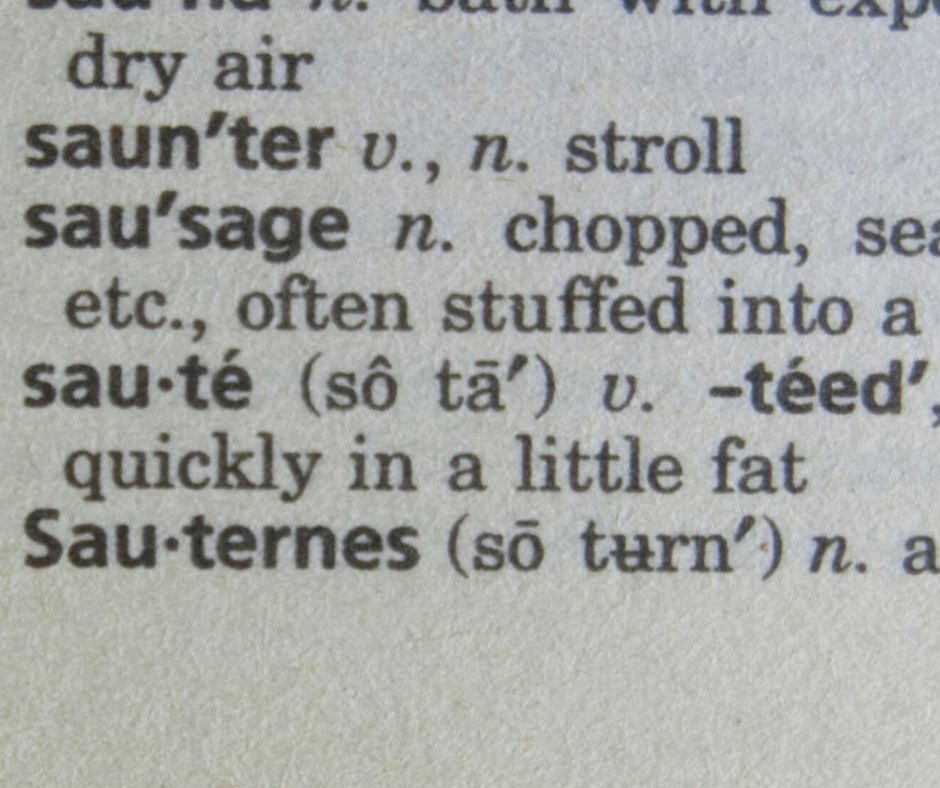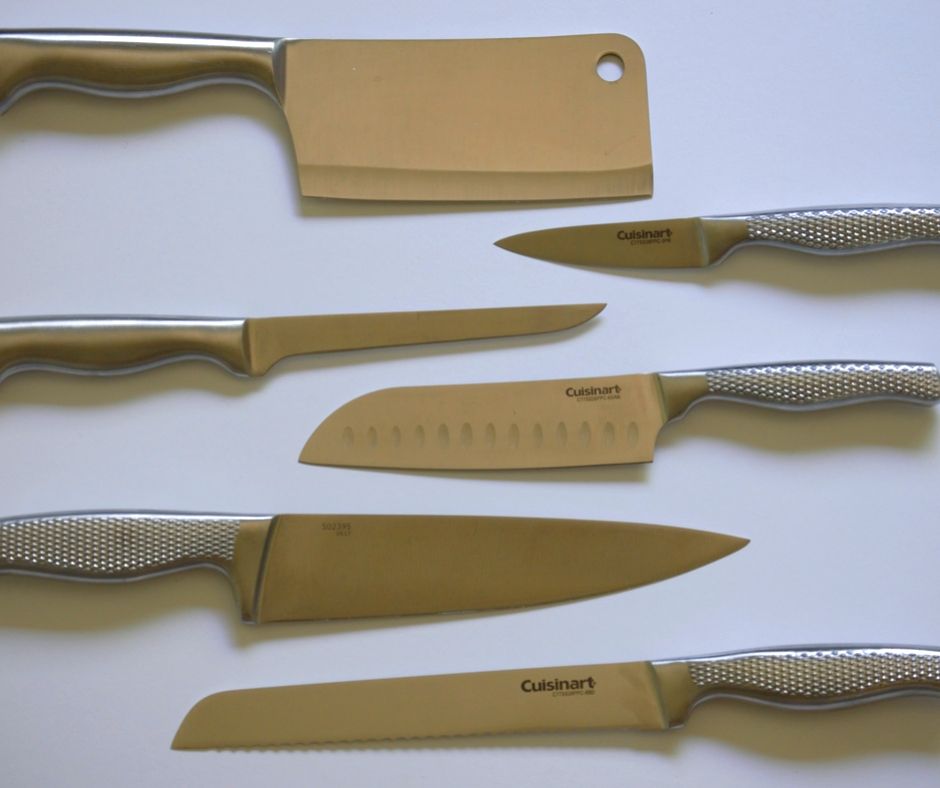
Why you should own a carbon steel wok
Purchasing a wok for the first time can often be a daunting task as there’s a lot of options. You have to choose between sizes ranging from as small as 10 inches to as big as 20 inches. There’s the choice between a more traditional round bottom and a more westernized flat bottom. But probably the most difficult one is deciding on the material that the wok is made out of. And while there are a myriad of materials to choose from in general people will decide upon one of two choices. The more professional carbon steel wok, or the ever prevalent non-stick wok.
First, let’s talk about the non-stick wok.
Look I get it, a non-stick wok sounds enticing. In fact, for most of my life, I have only owned non-stick woks. They are easy to cook with and there’s practically no maintenance involved. To be completely honest it’s not a horrible choice. However, the phrase “you get what you pay for” really rings true when you look at the differences between a non-stick wok and a carbon steel one.
You see that “non-stick” coating isn’t going to last forever. And if you use your wok often then it probably will only take half a year before that coating begins to chip off.
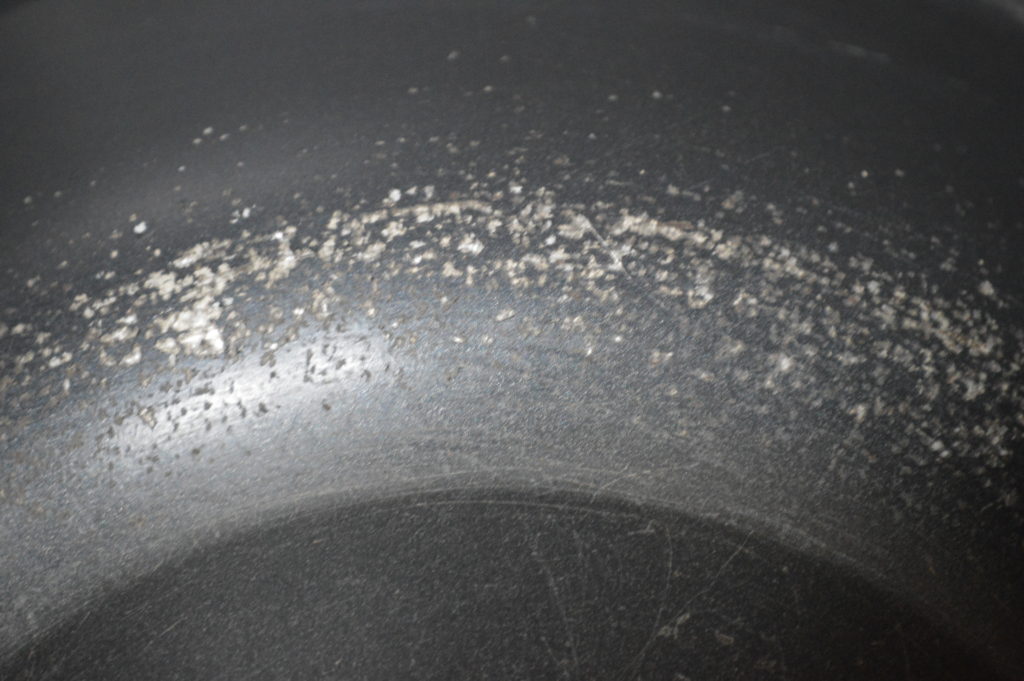
Which is bad!
For starters, the flakes of that coating are toxic (though honestly, you have to eat a ton for it to be really harmful). But more importantly, once the coating starts to come off there is no way to put it back on. And once that happens your wok pretty much useless. That’s why after going through probably my 6th or 7th non-stick wok, I decided to purchase a carbon steel one.
Sure they’re a little bit more expensive, but if I provide it with enough TLC my carbon steel wok should last for a lifetime. So when you look at it like that you’re actually saving money by purchasing a carbon steel wok over a non-stick one.
Plus carbon steel is a great conductor of heat which that makes it excellent for stir-frying. So if you really want that restaurant taste then you have to use a carbon steel wok.
Why carbon steel woks need to be seasoned
Ok, so if you haven’t figured it out by now carbon steel isn’t nonstick in its raw form. That’s why before you get to cooking with your new carbon steel wok you will need to season it.

But what exactly do we mean by seasoning?
Well unlike when you season a piece of chicken we will not be adding herbs and salt to the wok. No, seasoning in the context of cookware is merely a term for placing a thin nonstick coating on the surface of the carbon steel.
Sure this might sound a little intimidating at first its actually quite a simple process.
It starts off by cleaning and drying your new wok. Then you simply rub the wok with a layer of oil. And finally, you heat the wok so that the oil breaks down from a liquid and transforms into a solid nonstick polymer.
That’s it!
And while the seasoning is mainly done to provide a nonstick coating to your wok, it also helps out by preventing the carbon steel from rusting. So you really don’t want to skip doing it.
How to season your carbon steel wok
For starters, every carbon steel wok is going to come pre-coated in rust-resistant oil. This isn’t the type of oil that you want to cook with so we need to remove this layer before we get to seasoning.
To do this simply place a little bit of dish soap in your wok along with some hot water and scrub it clean.

Once that’s done dry off the wok with a lint-free towel.
Next, we are going to want to “blue” the carbon steel. This step will not only get the carbon steel ready for the nonstick coating but will also burn off any leftover factory oil that might be on its surface. All you have to do is place your wok over high heat until its color changes from silver to blue.

Make sure to get the sides of the wok too!
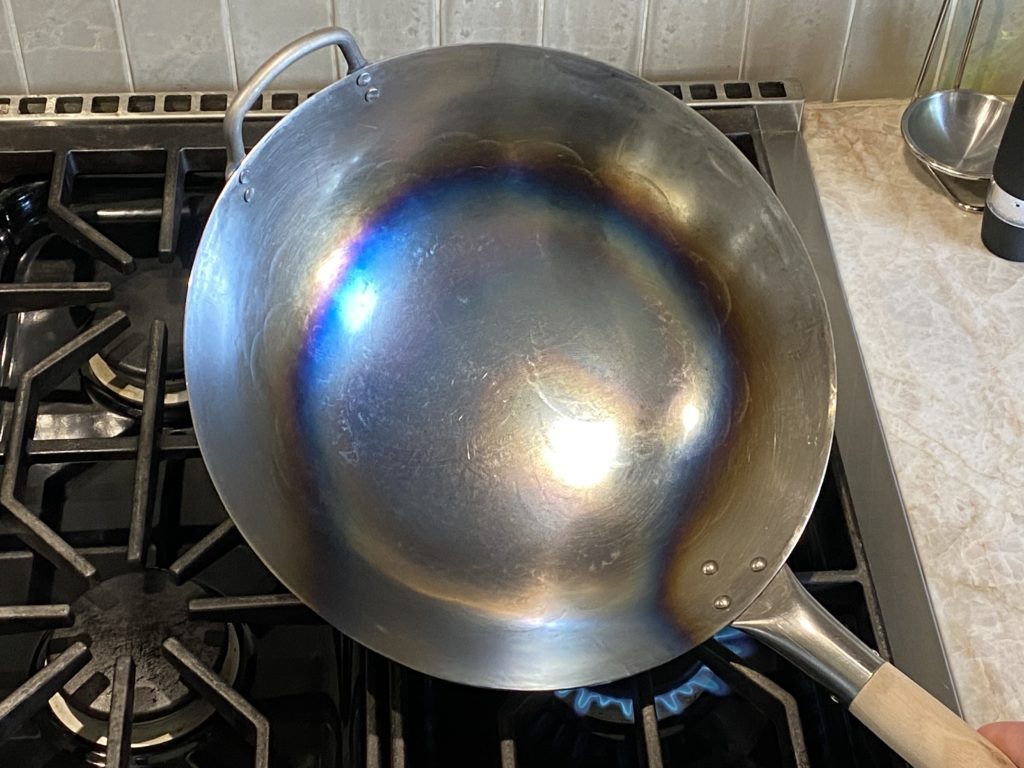
And don’t worry if it doesn’t all turn “blue”, as some parts might turn yellow, while some might turn purplish-pink. So as long as it’s no longer silver it’s good.
After the entire surface of the wok has turned blue you will want to take it off the heat and let it cool down for about 5 minutes. Also, you might want to open up a couple of windows because this next step can get a little smokey.
Once the wok is cool enough to touch you will need to get three things.
- Some oil with a high smoke point (i.e. safflower oil, or peanut oil)
- Some paper towels
- A small bowl
Begin by pouring about 2 tablespoons of oil into the bowl. Then dip the paper towel into the oil and use it to rub a thin layer of oil over the surface of the wok. Make sure to get the underside too.

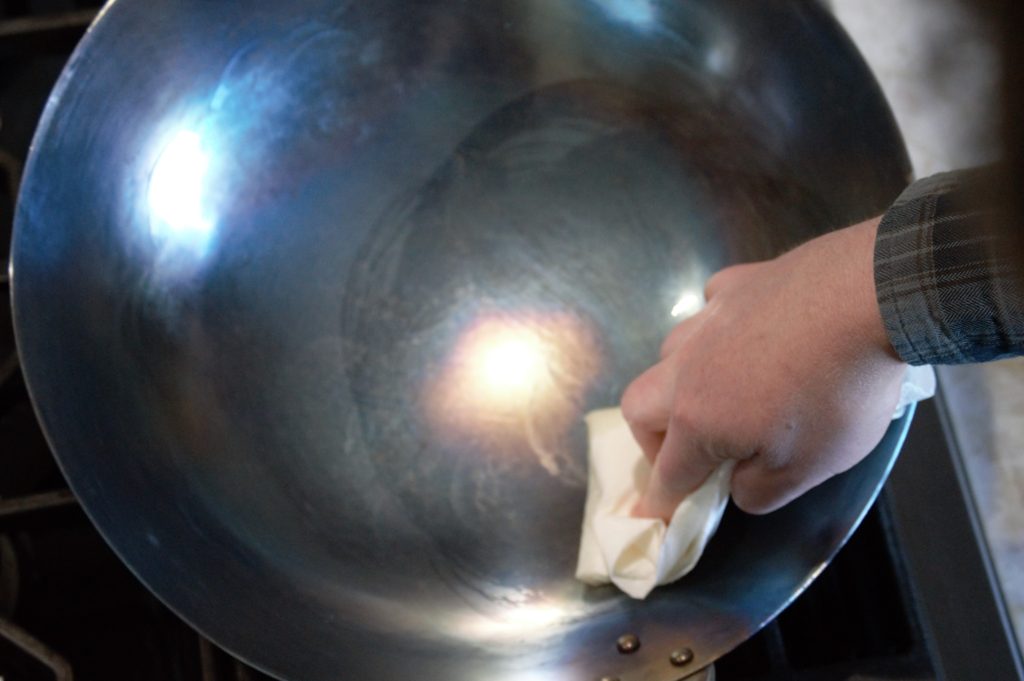
Then we will want to do the same thing that we did in the blueing process and place the wok over high heat. Let the wok sit in one place so that the oil begins to smoke and the spot takes on a black coloration. You will know that ana rea of the wok is done when it stops smoking.
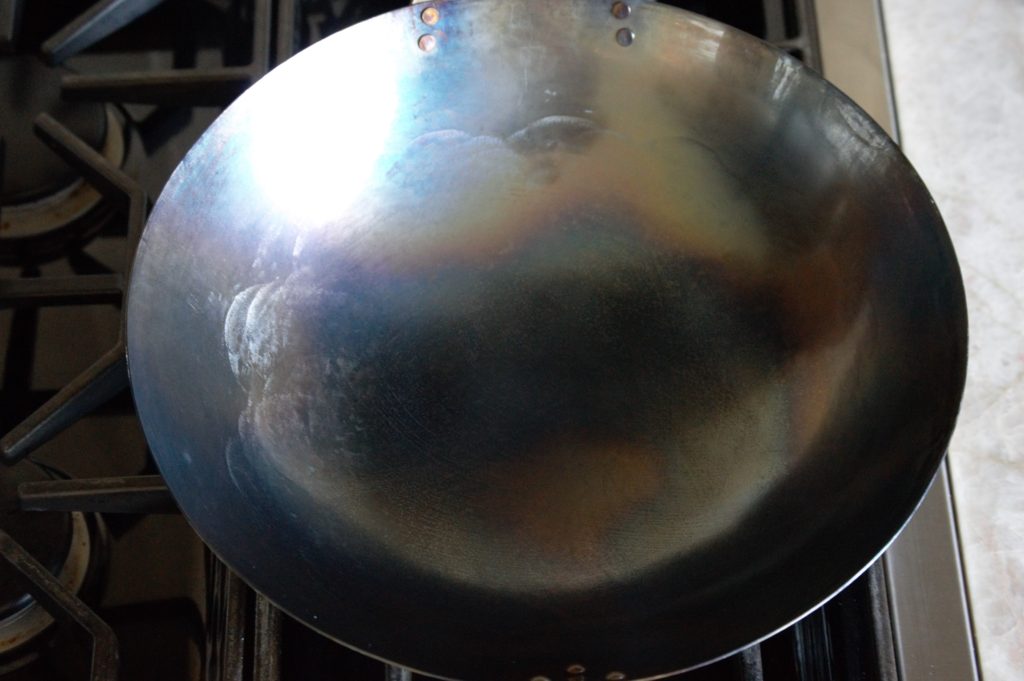
And again you will need to turn the wok to make sure that you get the sides.
At this point a lot of people will declare the job done, however, I prefer to do this step 2 or 3 times until the wok takes on a deep black color.

And ta-da! You have a beautifully seasoned wok ready to cook in.
Maintaining your carbon steel wok
- While there are a number of things that you can do to maintain the seasoning on your wok probably the best way is to use it often.
- After each time you use it simply place some hot water in the wok and scrub. No soap is needed. Then dry off the wok and place it back on your stovetop to completely dry it.
- If you don’t cook with your wok that often then you might want to rub in a little bit of oil and burn it like you did in the seasoning process. Simply do this after you clean the wok
- If you fail to do these things and the wok rusts again then simply follow the steps for seasoning it to save it
Now that you have a seasoned wok, here are some great stir fry recipes to cook up


